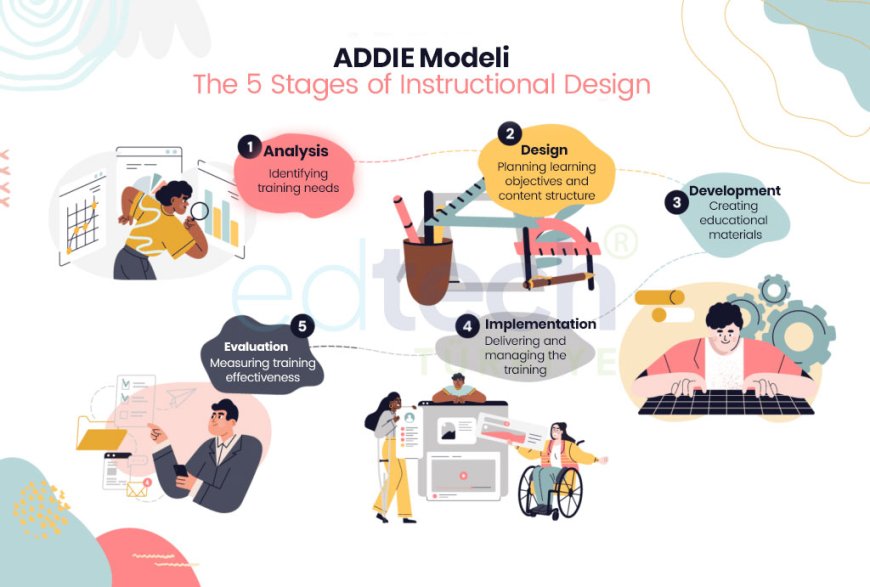What is the ADDIE Model?
ADDIE model, instructional design, corporate training, online learning, learning management system, course development, analysis design development implementation evaluation, training framework, instructional design process

Designing an effective learning experience isn’t just about delivering information.
To truly help learners grow, you need planning, structured execution, and continuous improvement.
Whether you’re an instructional designer creating an online program or an L&D professional developing internal corporate training, the way you plan, deliver, and refine your content will determine the success of the learning experience.
That’s where the ADDIE model comes in.
Developed by the U.S. military in the 1970s, ADDIE has become one of the most widely used instructional design frameworks in both academic and corporate learning environments. Companies like Microsoft and General Electric have used ADDIE to standardize leadership and skills training at scale.
What is ADDIE?
ADDIE is a five-phase instructional design process:
Analysis, Design, Development, Implementation, and Evaluation.
It’s not just a theory—it’s a clear roadmap that takes you from idea to launch. Let’s explore each stage, paired with a real-life corporate example.
1. Analysis – Understanding Your Learners
This phase answers the question: “Who is this training for, and what do they really need?”
-
In corporate training: This could mean reviewing performance data, interviewing managers, or running needs assessments.
-
In academic settings: It may involve surveys, pre-tests, or reviewing past performance.
Scenario:
A large bank wants to strengthen the leadership skills of its mid-level managers. Instructional designers meet with the HR department and review the past six months of performance reports. The finding: Managers are technically strong but need to improve in team motivation, conflict management, and giving feedback.
2. Design – Building the Blueprint
Based on the analysis, you create the learning architecture—defining structure, delivery methods, and assessment strategies.
Scenario:
For the bank’s program, designers map out a 6-week leadership development course:
-
Weekly live sessions (leadership theory + case discussions)
-
Role-play exercises (difficult employee conversations)
-
5–7 minute microlearning videos
-
Weekly mini quizzes
All materials are planned for both classroom delivery and LMS access.
3. Development – Creating the Content
Here, the plan turns into tangible learning materials—videos, scripts, presentations, interactive modules, and quizzes.
Scenario:
Role-play scripts are created with realistic scenarios, such as: “Ayşe needs to address a team member who is consistently late—how should she approach the conversation?” Interactive choices are added to make it engaging.
A pilot version of the first module is tested with 10 participants, and feedback leads to small adjustments before the full launch.
4. Implementation – Delivering the Learning Experience
The program is launched, but implementation is more than just uploading content—it’s about supporting learners throughout the journey.
Scenario:
Bank managers attend weekly live sessions, watch videos on the LMS, and complete assignments. Instructors provide individual feedback, while HR tracks participation and completion rates after each module.
5. Evaluation – Measuring Impact and Improving
The final stage measures both short-term and long-term outcomes—participant satisfaction, knowledge gained, and performance improvement.
Scenario:
Post-program surveys show 92% satisfaction. Three months later, team productivity is up 12%, and employee engagement scores rise by 18%. However, feedback shows a need for more depth in the “giving feedback” module—so it’s expanded for the next cohort.
EdTech Türkiye Insight
ADDIE gives instructional designers a clear, repeatable framework. It doesn’t limit creativity—it channels it into a structured process that ensures results.
With strong analysis at the start and continuous evaluation at the end, ADDIE turns training into a measurable investment rather than a checklist item.